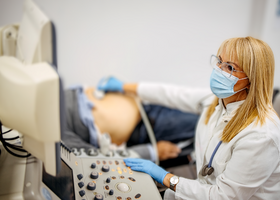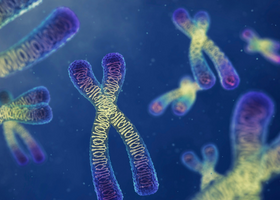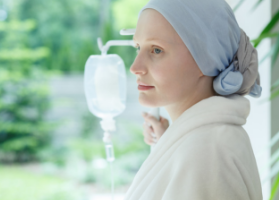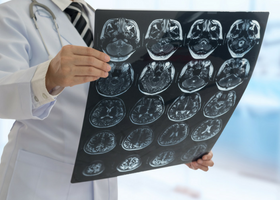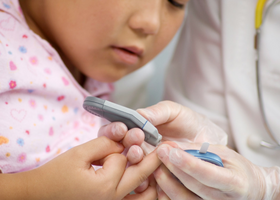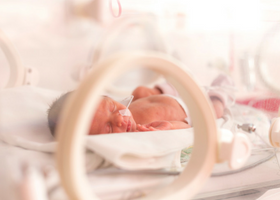Heart Disease
Heart disease is a leading cause of death and disability in Canada. It is caused by a variety of factors including genetics, lifestyle choices, and underlying medical conditions. Heart disease can lead to a variety of health impacts such as chest pain, shortness of breath, heart attack, and even death.
Over 3 million Canadians live with diagnosed heart disease or heart failure, which represents an estimated 7.6 billion in costs to Canada’s health care system. Regenerative medicine solutions for heart disease have the potential to repair or replace damaged heart tissue, restore normal heart function, and improve the quality of life for those living with heart disease, reducing the burden on our health system and on patients.
Stem Cell Network researchers are working to better understand and treat heart diseases, including rare (and often genetic) heart diseases, heart rhythm disorders, and cardiomyopathies. From 2019-2025, SCN has committed over $5.7 million in research funding for heart diseases.
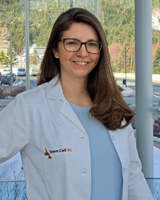 Understanding inherited heart disease in Newfoundland and Labrador
Understanding inherited heart disease in Newfoundland and Labrador
Jessica Esseltine, Memorial University of Newfoundland
Arrhythmogenic right ventricular cardiomyopathy (ARVC) is a heart disease that can cause sudden death as its first symptom. Among an affected group of families in Newfoundland and Labrador, this disease is caused by an inherited genetic mutation and has come to be known as the “Newfoundland curse.” The exact effects of the genetic mutation are a mystery – why does the disease affect men more than women? Why do some people with the disease die suddenly, while others with the same disease can live relatively normal lives? Dr. Esseltine and her team are working to solve this mystery by taking a small skin biopsy from affected patients, turning those skin cells into stem cells called induced pluripotent stem cells (iPSCs), and then using those iPSCs to create beating heart cells that can be studied in the lab. The team hopes that the project will result in a better understanding of the biology behind ARVC and lead to new preventative measures and treatments.
https://www.esseltinelab.com/team
“We have a dedicated group of families invested in helping with our research. Although concentrated within NL, the heart disease (ARVC) caused by this mutation is seen worldwide. This research will allow us to understand basic ARVC biology, which may lead to new therapies based on understanding the causes of the variation in disease presentation we see, leading to true precision medicine.” – Dr. Jessica Esseltine
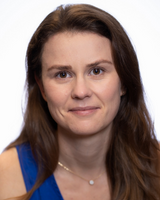 Developing stem cell-based biological pacemakers
Developing stem cell-based biological pacemakers
Stephanie Protze, University Health Network
The human heartbeat is controlled by the primary pacemaker called the sinoatrial node (SAN). Failure of the SAN, due to diseases or aging, causes a life-threateningly slow heartbeat and needs to be treated by implantation of an electronic pacemaker. Approximately 21,000 Canadians receive an electronic pacemaker every year, a number that is steadily increasing with an aging population. Electronic pacemakers have several disadvantages such as the need for battery replacements and the risks of infection and heart failure. Dr. Protze and her team are developing a stem cell-derived biological pacemaker that could replace the damaged SAN with new functional pacemaker cells. Before advancing to clinical trials, the team must first perfect methods to grow large numbers of heart pacemaker cells and test them in pre-clinical models of heart disease.
https://www.uhnresearch.ca/researcher/stephanie-protze
“This project will enable us to grow biological pacemakers in the lab, paving the way for future patient-specific disease modelling and drug screening experiments to help us better understand pacemaker disorders and develop new treatment options. Our team hopes to advance the development of biological pacemakers that represent a possible cure, rather than a treatment, for patients with pacemaker diseases in Canada and worldwide.” – Dr. Stephanie Protze
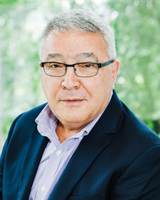 Towards prevention of sudden cardiac arrest in children
Towards prevention of sudden cardiac arrest in children
Glen Tibbits, Simon Fraser University
Catecholaminergic Polymorphic Ventricular Tachycardia (CPVT) is a heart disease that carries a high risk of sudden heart attacks in children. Most children with the disease will experience their first symptoms between 3-16 years old – and 30-50% of those diagnosed with CPVT will die by the age of 35. This condition can be caused by several different genetic mutations, which poses a challenge to researchers as every patient might have a different genetic mutation and respond differently to treatments. Dr. Tibbits and his team take CPVT patient blood samples and turn them into stem cells called induced pluripotent stem cells (iPSCs), and then turn those iPSCs into beating heart cells that carry the genetic mutation so they can study them in the lab. Ultimately, the team hopes to develop personalized treatments for each patient and prevent unexpected early death.
“It can be difficult to pinpoint the exact cause of the heart disease CPVT, which makes it very difficult to develop a treatment protocol for each patient. We currently meet as a group of cardiologists, cardiac physiologists, biologists and geneticists to discuss specific patients and specific variants. This work will generate a wealth of data that we hope can be used to develop personalized treatments, providing new hope for patients with this devastating disease.” – Dr. Glen Tibbits
 Deciphering the code cells used to activate genes to better understand and treat disease
Deciphering the code cells used to activate genes to better understand and treat disease
Carl de Boer, University of British Columbia
Many common diseases, including heart disease, are thought to be caused in part by genetics – the unique makeup of your DNA that scientists are still working to fully understand. By using computer models that can analyze millions of DNA sequences at once in patient heart cells and stem cells, Dr. de Boer and his team are building artificial intelligence tools that will one day be able to determine exactly how your genetic makeup affects your risk of contracting heart disease, enabling personalized gene therapies to treat genetic heart conditions.
“Many common diseases originate in mutations in the genetic code. By uncovering how segments of DNA work together in healthy hearts and in the presence of disease-causing mutations, we will shed light on the origins of heart disease, develop predictive tools, and enable personalized treatments. We hope to eventually create resources that could be applied to many other diseases.” – Dr. Carl de Boer
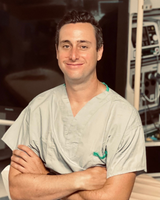 Developing stem cell-based personalized medicine for atrial fibrillation
Developing stem cell-based personalized medicine for atrial fibrillation
Zachary Laksman, University of British Columbia
Atrial Fibrillation (AF) is the most common heart rhythm disorder and has devastating consequences on patients and on Canada’s health care system. Dr. Laksman and his team are developing methods to grow stem cell-derived heart cells carrying the genetic mutations that cause AF. By exposing the heart cells to many different drugs and using a computer to analyze their response, the team will build a database that can be used to identify the best therapy to use for each patient, providing clinically relevant targeted solutions to patients suffering from AF.
https://www.hli.ubc.ca/researchers/zachary-laksman/
“Our international team of collaborators and industry partners are dedicated to delivering personalized therapy to patients with atrial fibrillation. This project will use stem cell derived heart tissue and complex computational modeling to identify the most promising therapies for each patient. Every step of this process requires unique expertise and technological innovation. This can only be accomplished when clinicians, scientists, and industry partners come together with a common vision focussed on clinical impact.” – Dr. Zachary Laksman
 Defining how cardiac muscle cells become fully mature
Defining how cardiac muscle cells become fully mature
Sheila Teves, University of British Columbia
Genetics often play a role in a patient’s risk of contracting heart disease. The challenge is that each patient carries a unique set of genes so the genetic risk factors and causes underlying heart disease can be unique for every single patient. One way to study a patient’s unique genes is to take a small biopsy (e.g., skin) from a patient and manipulate those skin cells in the lab to become a special cell type called induced pluripotent stem cells (iPSCs), which can then become any type of cell in the body, such as heart cells. Dr. Teves and her team are studying the pathway to create heart cells from iPSCs and hope to use their improved methods to create patient-specific treatments for certain types of heart disease.
https://teveslab.wordpress.com/
“Our research will generate fundamental understandings of heart stem cells, and we hope to use this knowledge to develop new treatments for heart diseases such as hypertrophic cardiomyopathy. Through this project funded by SCN, I will build connections with Canada’s strong community of stem cell and regenerative medicine researchers and build pan-Canadian collaborations to develop better and more targeted stem cell-based therapies for heart disease.” – Dr. Sheila Teves
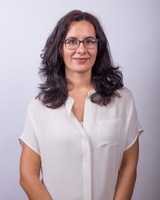 Engineering cardiac tissues with stem cell derived immune cells to repair human hearts
Engineering cardiac tissues with stem cell derived immune cells to repair human hearts
Milica Radisic, University Health Network
After a heart attack, there is not always enough healthy heart muscle left for the heart to continue working properly. Many researchers working on treatments for heart disease focus on the heart muscle cells that help the heart to keep beating. However, there are many other types of supporting cells in the heart like connecting cells called fibroblasts and immune cells called macrophages and these cells all work together to form functional heart tissue. Dr. Radisic and her team are working on creating different types of heart cells in the lab and mixing them together on a structured plastic chip to create small sections of working heart tissue that looks and beats just like real heart muscle. They will test these micro-hearts in preclinical models of heart disease with the goal of eventually moving forward to clinical trials and developing new treatments for heart disease.
“Our team has done the painstaking work of developing methods for growing stem-cell derived heart and immune cells, engineering the platform and developing ethics protocols. We have all the pieces in place for this project to succeed, and we have strong commercialization partners in place with involvement from BlueRock Therapeutics and TARA Biosystems. This work will pave the way for new regenerative approaches in heart disease.” – Dr. Milica Radisic
 Repairing Injured Hearts with Mature Heart Muscle Cells from Human Stem Cells
Repairing Injured Hearts with Mature Heart Muscle Cells from Human Stem Cells
Michael Laflamme, University Health Network
After a heart attack, the heart muscle is left with significant damage that can have devastating impacts including heart failure, which is associated with reduced quality of life and high mortality. Dr. Laflamme and his team are working on cell therapies that would replace the damaged heart muscle with stem cell-derived heart muscle cells. When stem cells are used to make heart cells, they go through several stages of growth and change in a process called differentiation. In adults, the heart muscle cells that keep your heart beating are fully differentiated, and Dr. Laflamme’s team has developed methods to make heart cells that more closely match those fully differentiated cells found in adults. By transplanting these mature cells, they hope to develop better methods to repair damaged heart muscle, providing new treatment options for heart disease patients.
https://www.uhnresearch.ca/researcher/michael-laflamme
“The ability to regenerate damaged hearts represents a potentially revolutionary new therapy for patients suffering from heart disease with very high morbidity and mortality. The successful completion of this work will help advance this novel cell product toward a first-in-human clinical trial in post-heart attack heart failure patients and further establish Canada’s leadership role in cardiac regenerative medicine.” – Dr. Michael Laflamme
 Advancing microvessel-based cardiac regeneration into a large pre-clinical animal model
Advancing microvessel-based cardiac regeneration into a large pre-clinical animal model
Sara Vasconcelos, University Health Network
Cell transplantation has the potential to regenerate organs after damage caused by various diseases and acute health events, such as heart attacks. However, for cells to survive transplantation and effectively regenerate organs, they need immediate access to oxygen and nutrients from blood vessels. Many past attempts at making new blood vessels for organ regeneration have failed. Dr. Sara Vasconcelos and her team are researching ways to overcome this roadblock, with a focus on generating alternative therapeutic avenues to treat cardiovascular diseases. She and her team are already making significant strides in their work, which has exciting implications for cell-replacement therapies. For the first time, they have shown an effective means to support cell survival and improved organ function in small animal models, such as rats, by recycling blood vessels from fat to support the survival of transplanted cells.
The next steps in Dr. Vasconcelos’ research are to advance this work using a large animal model and to generate the necessary efficacy and safety data to eventually move this therapy into clinical trials. If successful, this research will be a game-changer for millions of people.
http://www.vasconceloslab.com/
“We have exciting data demonstrating the potential of our technology to support cell transplantation and improve treatments for heart disease. The lack of an effective strategy to restore blood flow after cell transplantation is one of the biggest bottlenecks in making cell therapies a reality. Developing a vascularization strategy will enable cell therapy, dramatically increasing quality of life, and reducing the cost to the health system.” – Dr. Sara Vasconcelos

